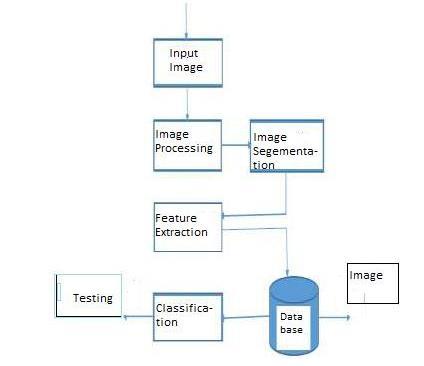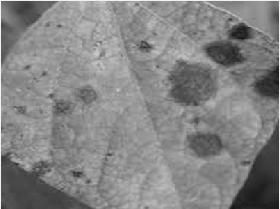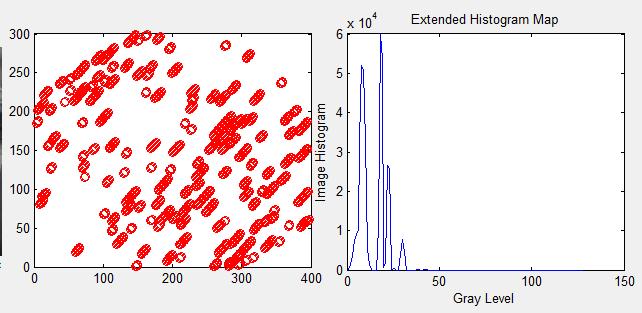
International Research Journal of Engineering and Technology (IRJET) e-ISSN: 2395-0056


International Research Journal of Engineering and Technology (IRJET) e-ISSN: 2395-0056
Ghanashyam M*1 , Sumanth B N *2 , Prof.Vidya Shankar *3, Puneetha M P*4
*1UG Scholar (BCA),Dept. of computer science, JSS College Arts, Commerce, Science (JSSCACS), Mysore, Karnataka, India
*2UG Scholar (BCA),Dept. of computer science, JSS College Arts, Commerce, Science (JSSCACS), Mysore, Karnataka, India
*3 HOD and Professor, Dept. of computer science, JSS College Arts, Commerce, Science (JSSCACS), Mysore, Karnataka, India
*4 Asst. Professor, Dept. of computer science, JSS College Arts, Commerce, Science(JSSCACS), Mysore, Karnataka, India
Abstract –
Farmers need automatic disease monitoring systems in order to improve crop development and yield. It takes a lot of time and experience, which is often expensive or unavailable, to perform manual monitoring, which is out of date. With an emphasis on leaves and fruits, this paper presents a novel method for quickly and accurately detecting plant diseases through the use of digital image processing. For disease detection and classification, the suggested approach combines a multi-SVM algorithm with a k-means clustering technique in MATLAB. About 70% of the people in India is dependent on agriculture, which is the backbone of the country's economy. Crop diseases are frequently the result of changes in the climate, such as intense rainfall and temperature swings. It takes a lot of time and money to diagnose severe illnesses using conventional methods, thus professional assistance is required. In order to detect plant diseases effectively and accurately, this research explores a contemporary method that uses image processing techniques. It focuses specifically on leaf infections.
Key Words: capturing images, preliminary processing, feature extraction categorizing, neural net.
India is a country based mostly on agriculture. Agriculture accounts for 70% of India's GDP. Crops becomeinfectedasaresultofclimaticchangessuchas intense rainfall and sharp temperature swings. And thosecanbeidentifiedbydefoliation,colourchanges, spotsontheleaf,anddrynessoftheleaf.Themajority ofpeopleareunabletoquicklyandcorrectlyrecognise theillness.Weneedspecialistswhocandiagnosethe illness in order to accomplish it. However, this is a more costly and time-consuming procedure. The suggestedproject,whichaimstodetectleafinfections,
usesimageprocessingtechniquesbecauseimagesarea valuablesourceofinformationanddataforbiological science. Digital image processing and image analysis technology,whicharebasedonadvancementsinmicro electronicsandcomputers,havenumerousbiological applications.
Disease identification heavily relies on image segmentation, which is the process of breaking a pictureupintoitscomponentpieces.Thereareseveral approachesavailable,rangingfrombasicthresholding tosophisticatedcolourimagesegmentation.Inorderto find distinct features that would be difficult for computerstorecognizewithoutintelligentprocessing, this study uses evolutionary algorithms for colour imagesegmentation.
Theobjectiveistoincreasetheaccuracyofleaf diseasedetection.
Partitioningtheleafaccordingtodiseasestatus
Thegoalistoobtaintheinputoftheprocessed leafimage.
TheK-Meansclusteringalgorithmwillbeused tosegmenttheimage.
Lastly,useanSVMclassifiertodeterminethe diseasetypeandseveritylevelthathasaffected theleaf.
combinesandsynthesizespriorunderstanding ofatopic.
Illustrateshowyouhaveappliedotherpeople's knowledge and how your research has generatednewconcepts.
Volume: 11 Issue: 06 | Jun 2024 www.irjet.net p-ISSN: 2395-0072 © 2024, IRJET | Impact Factor value: 8.226 | ISO 9001:2008 Certified Journal | Page955

International Research Journal of Engineering and Technology (IRJET) e-ISSN: 2395-0056
Volume: 11 Issue: 06 | Jun 2024 www.irjet.net p-ISSN: 2395-0072

Fig -1:Thesuggestedmethod'sblockdiagram
Image Input:
Toidentifyillnesses,weemployeddigitalleafphotos. Several internet sources provided the photos. We employed black spot, anthracnose, and rust three prevalentrosediseases inourstudy.JPEGphotosof thediseasesaredisplayedinFig.1
B.ImagePreparation:
Thefirststepbeforefeature extractionisimage preprocessing chores. Image preprocessing processing consists of three steps: image conversion, image enhancement, and picture cropping. The image is turnedtograyscaleafterbeingtrimmedtoremoveleaf diseases.WeappliedaLaplacianfiltertoimprovethe image.
III. A BASIC SYSTEM BLOCK DIAGRAM THAT INCLUDES A DESCRIPTION
Inactive Stage:
Animageanalyzerisusedtoextractanomalousfeatures fromahugenumberofdefectivephotos.Theclassifierwill thenusethesefeaturesthathavebeensavedinafeature database.
Online Stage:
Diagnosesaremadeeasierwhenanabnormalfeatureofa particulardefectiveimageisretrievedbyanimageanalyzer and then categorized into a particular disorder by a
classifier.Animageanalyzer'sprimarygoalistoidentifyany aberrant symptoms of a colour picture defect that are representedbyspotsintermsofsize,colour,andshape.The obtained defected colour image serves as the image analyzer's input, and the extracted characteristics of the defectedimageserveastheanalyzer'soutput,asseeninthe figurebelow.
III.EXPERIMENTAL SNAPSHOTS:




International Research Journal of Engineering and Technology (IRJET) e-ISSN: 2395-0056
Volume: 11 Issue: 06 | Jun 2024 www.irjet.net p-ISSN: 2395-0072

This study gives an overview of the many disease classification methods used to identify plant leaf diseases, along with an algorithm for picture segmentationthatcanbeutilized for bothautomatic plant leaf disease detection and classification in the future.The10speciesthatthesuggestedalgorithmis tested on include bananas, beans, jackfruit, lemons, mangoes, potatoes, tomatoes, and sapotas. Consequently,theseplants'associateddiseaseswere collected for identification. Optimizing the results requiredverylittlecomputingwork,demonstratingthe effectiveness of the suggested method in identifying and categorizing leaf illnesses. The ability to detect plant diseases at an early or preliminary stage is anotherbenefitofemployingthisapproach.Inorderto increasetheidentificationrateduringtheartificial.
Usingthetechniquedescribedinthethesis,asoybean expert system for farmers may be created that will enableearlyplantfoliarinfectiondetection,infection grading,andremotedeliveryoftheproperremedy.We have attempted to draw attention to the issues surrounding the production of soybeans and the reasons behind low yield loss in developing nations such as India through our thesis work. Six foliar diseasesthatcausesignificantyieldlossinsoyaplants havebeenidentified:rust,bacterialblight,brownspot, downymildew,frogeye,andsuddendeathsyndrome. Afullyautomaticmethodhasbeenproposedtoidentify and classify these diseases using various digital image processing techniques, as well as to classify the disease severitylevelusingfiveclasses.
[1] "Spectrum-based Method for Quantitatively Detecting Diseases on Cucumber Leaf," 2011 IEEE, Hong-ningLi,JieFeng,Wei-pingYang,Xiang-shengWu, Ze-dongLi,WeiLiu).
[2]"ClassificationofRubberTreeLeafDiseaseUsing Spectrometer," Al Junid, S.A.M.; Haron, M.A.; Osman, F.N.; Hashim, H.Citrus canker identification by leaf imageanalysis,MinZhang,QinggangMeng,IEEE,2010.
[3]DheebAlBashish,SuliemanBani-Ahmad,andMalik Braik"AFrameworkforDetectionandClassificationof PlantLeafandStemDiseases"2010byIEEE.
[4]KholisMajid,YeniHerdiyeni,AunuRauf"I-PEDIA: Mobile Application for Paddy Disease Identification usingFuzzyEntropyandProbabilisticNeuralNetwork" ICACSIS2013,IEEE
[5]Digital image processing methods for identifying, measuring,andcategorisingplantdiseases(SPRINGER PLUS-2013) is discussed by Mrs. Jayme Garcia ArnalBarbedoin.
[6] "Advances in image processing for detection of plant diseases,"SmitaNaikwadiandNiketAmoda,International Journal of Application or Innovation in Engineering & Management,pp.168–175,November2013.
[7] In 2011, Al-Bashish, D., Braik, M., and Bani-Ahmad, S. "DetectionandclassificationofleafdiseasesusingKmeans-